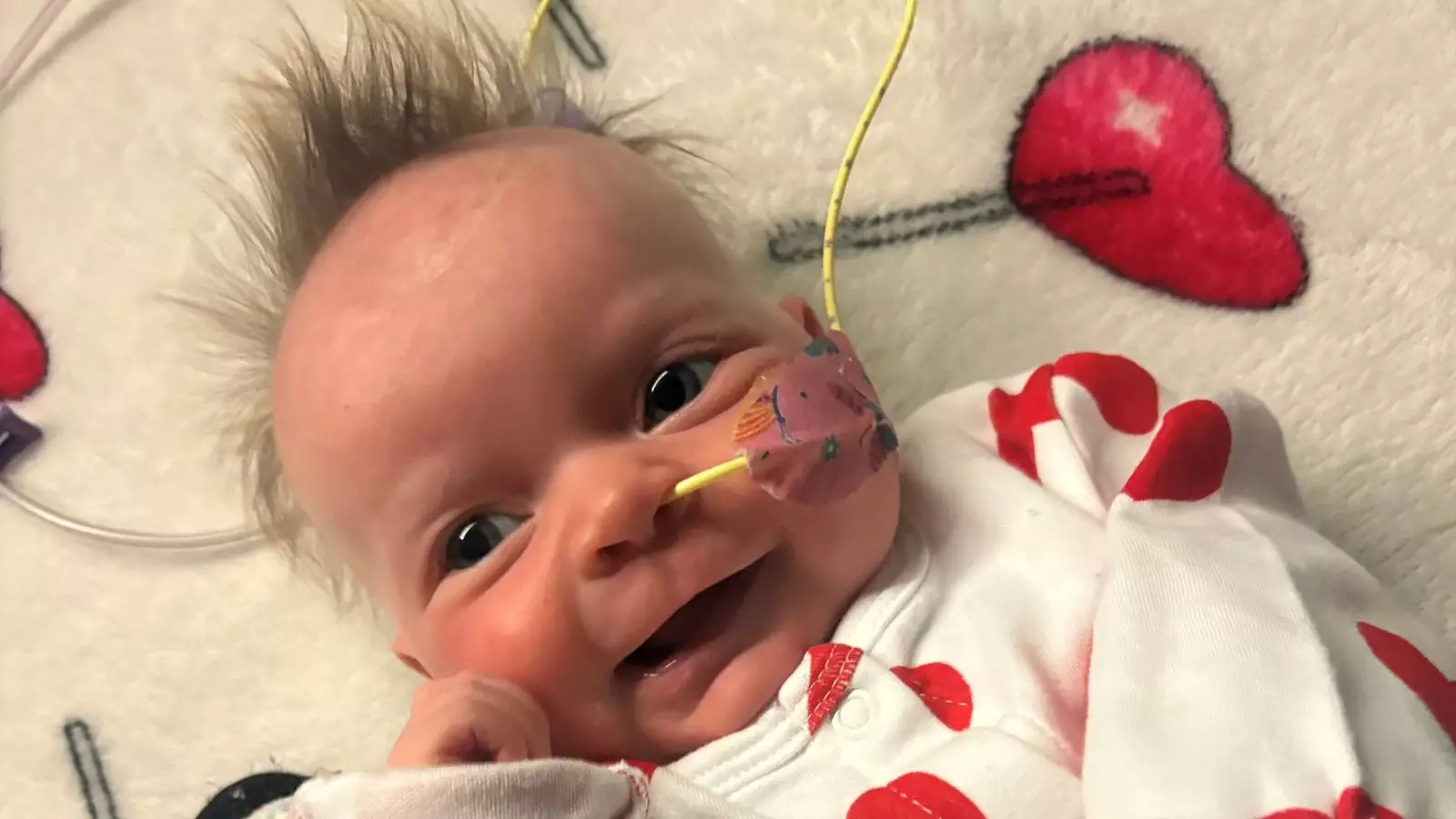In a world where medical advancements are often celebrated, the reality of rare and life-threatening conditions continues to cast a long shadow over many families. One such family is that of Dolcie-Mae Edwards-Raymond, a three-month-old baby from Newport in South Wales, who has been diagnosed with hemophagocytic lymphohistiocystosis (HLH). Initially, her symptoms—fever and failure to thrive—were misattributed to a viral infection, underscoring a critical issue in early diagnosis for rare diseases. Herbert Marshall, a prominent figure in the field of pediatric medicine, explained that HLH is a severe immune system disorder, characterized by an aggressive overreaction of the body’s immune system against itself. Without swift and effective treatment, the condition can be fatal, highlighting the urgent need for medical professionals to recognize its symptoms early on to prevent disastrous outcomes.
When Dolcie-Mae’s diagnosis was revealed to her young parents, Courtney-Jade Edwards and Ashley David Raymond, the emotional weight of the news was unbearable. “No family should have to watch their child endure such a significant battle,” Courtney-Jade lamented, emphasizing the plight of parents who feel powerless in the face of their child’s suffering. To comprehend that one’s infant is fighting a condition that threatens their very existence is a harrowing reality. This narrative of despair is all too common among families grappling with serious health issues, particularly rare disorders that many know little about until they are personally affected.
Beyond the physical implications of such a diagnosis, it is the emotional and psychological toll that often goes underreported. Parents may experience a haunting sense of helplessness and fear, knowing that their child’s fate may depend on finding a compatible stem cell donor. Such situations provoke a gut-wrenching mix of love, worry, and an urgent desire for outsiders to rally toward a cause that could save their child’s life.
The Imperative of Donor Registration
In response to her daughter’s needs, Courtney-Jade has taken on the monumental task of advocating for stem cell donor registration, specifically targeting young individuals aged 16 to 30. The Anthony Nolan charity has been pivotal in this crusade, a lifeline for families facing blood cancers and related disorders. “Joining the stem cell register could give my baby girl a second chance at life,” she urged, underscoring the altruism that is at the heart of stem cell donation.
The act of registering as a stem cell donor is more than just a bureaucratic process—it is an invitation to potential hope for families like the Edwards-Raymonds. Millions of patients rely on this registry, as finding a match from an unrelated donor can significantly increase the chances of recovery and survival. Each swab kit could mean the difference between life and death for someone in desperate need.
Charlotte Cunliffe, from Anthony Nolan, articulated the collective responsibility society shares in supporting families affected by severe health crises. “It is heartbreaking to think about what little Dolcie-Mae and her family are facing,” she noted, reinforcing the notion that community involvement is crucial. The organization serves as both a beacon of hope and a call to action, emphasizing the vital role that everyday individuals can play in fostering survival for those battling these illnesses.
The narrative surrounding stem cell donation must evolve from being perceived merely as a medical procedure to a broader movement of compassion and community solidarity. Online platforms and outreach initiatives encourage younger generations to view registration not as a daunting task but a straightforward act of kindness that could potentially save a life.
In the face of Dolcie-Mae’s life-threatening diagnosis, her family’s story resonates far beyond their personal struggle—it exemplifies the critical junction of medical science, community support, and individual courage. By advocating for stem cell registration, they embody resilience and hope, encouraging others to take action amid their uncertain journey. The urgency of this situation calls on everyone’s empathy, illustrating how collective efforts can lead to breakthroughs in healing for those who need it most. In this shared pursuit, every new donor can become a beacon of hope, illuminating the path to recovery for countless families in distress.


Leave a Reply